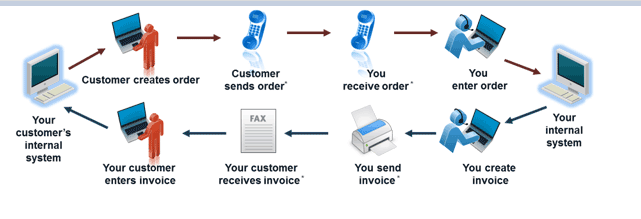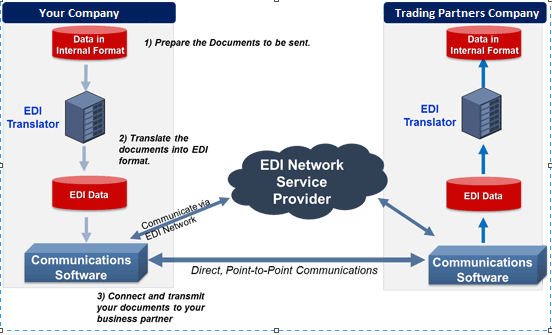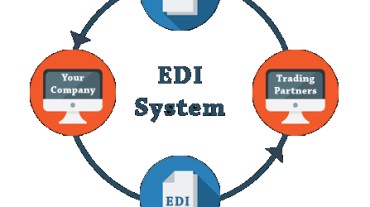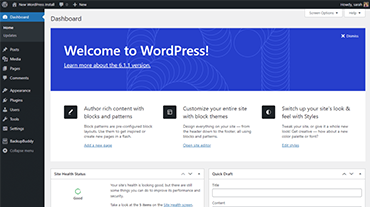Electronic Data Interchange (EDI)
EDI is used to exchange documents from computer-to-computer in a standard electronic format. EDI can be defined as the transfer of structured data, from one computer system to another without human intervention. EDI has existed since the early 70s, and there are many EDI standards including X12, EDIFACT, ODETTE, etc. In 1996, the National Institute of Standards and Technology defined electronic data interchange as “the computer-to-computer interchange of strictly formatted messages that represent documents other than monetary instruments. EDI implies a sequence of messages between two parties, either of whom may serve as originator or recipient. In EDI, the usual processing of received messages is by computer only. Human intervention in the processing of a received message is typically intended only for error conditions, for quality review, and for special situations. NaarSoft Tech Services handles the processing of EDI invoices – for error corrections and keying in missing invoices in special cases.
Manual Process before EDI
A typical manual process looks like below, with lots of paper work and people involvement:


The most common documents exchanged via EDI are purchase orders, invoices and Advance Shipping Notices. But there are several others such as bill of lading, customs documents, inventory documents, shipping status documents.
Because EDI documents must be processed by computers rather than humans, a standard format must be used so that the computer will be able to read and understand the documents. A standard format describes what each piece of information is and in what format (e.g. integer, decimal, MMDDYY).
Without a standard format, each company would send documents using its company-specific format and, the receivers computer system doesn’t understand the company-specific format of the senders format.
There are several EDI standards in use today, including ANSI, EDIFACT, TRADACOMS and XML. And, for each standard there are many different versions, e.g. ANSI 5010 or EDIFACT version D12, Release A. When two businesses decide to exchange EDI documents, they must agree on the specific EDI standard and version. Businesses typically use an EDI translator – either as in-house software or via an EDI service provider – to translate the EDI format so the data can be used by their internal applications and thus enable straight through processing of documents.
Benefits
Cost Savings
- Research has consistently shown that EDI costs at most one third of its paper-based equivalent
- One report put the cost at 70 times less. A major American company reported a reduction in its order processing costs from $38/order to $1.35/order with EDI
- The EU has reported that by taking 10 minutes less to process electronic invoices it saves 120 euro per invoice every year
- GS1 UK found that UK grocers saved £14 on every electronic order
Speed and Accuracy
- Transactions that used to take 5 days by paper can be completed in under an hour. An American automotive corporation reduced a key cycle time by 97% – a 30-day process was reduced to 24 hours. And a major retailer reduced order cycle time by 75% from 24 days to 6 days
- Research has shown that with paper-based processes often as much as 5% of the data on an invoice is inaccurate
- More accurate data means that the entire supply chain is more efficient. Some estimates suggest that EDI can result in 30% faster delivery time to customers
Efficiency
- Automating paper-based tasks frees staff to concentrate on higher-value tasks. It provides them with the tools to be more productive. Research reports as much as a 50% savings on human resources from the use of EDI
- The prompt processing of accurate business documents leads to less re-working of orders, fewer stock outs and fewer cancelled orders
- Buyers can take full advantage of better payment terms and discounts
- Sellers benefit from improved cash flow and reduced order-to-cash cycles
- Shortening the order processing and delivery times means that organisations can reduce their inventory levels – research suggests by an average of 10%, a major benefit when you consider that inventory often accounts for 90% of product costs





